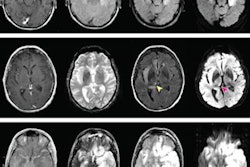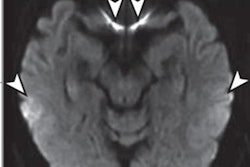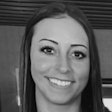TORONTO - General radiologists reviewing MRI scans missed 65% of cases of Creutzfeldt-Jakob disease (CJD) -- most of which were later spotted by specialist radiologists more familiar with the condition, according to a study presented at the American Academy of Neurology (AAN) annual meeting.
In about half of the missed cases, the radiologists did not even notice abnormalities on the MRI exam, and in the other half they noticed the abnormalities but did not identify them as being linked to CJD, according to a research group led by Dr. Michael Geschwind, Ph.D., of the Memory and Aging Center at the University of California, San Francisco (UCSF).
The center is a major referral area for suspected CJD cases. Each patient's MR images are stored in a database at the center and scored as "definitely," "probably," "uncertain," "probably not," or "definitely not" consistent with a diagnosis of CJD.
Geschwind and his co-investigators at the center tapped into this database to examine records of patients who were referred to them between January 2006 and September 2009, and who were subsequently diagnosed with probable or definite sporadic CJD (sCJD).
The researchers chose the start date of January 2006 because this was well after it had been established in the literature that MRI is useful in sCJD diagnosis -- therefore, radiologists could have been expected to be familiar with this fact by then. The cases were serial referrals from neurologists who had either diagnosed the patients with rapidly progressive dementia or possible CJD, or who were stumped as to the diagnosis. Only patients with an outside radiology or neuroradiology report and a copy of an MR exam on CD were included in the study.
In their analysis, Geschwind and colleagues included only patients for whom electronic copies of the MRI study and copies of the outside radiology report were available, and whose T2-weighted MR images were of reasonable quality and included both fluid-attenuated inversion recovery (FLAIR) and diffusion-weighted imaging (DWI) sequences. They identified 66 patients meeting all of these criteria.
The researchers examined a total of 76 sets of scans; the sets included FLAIR and DWI scans as well as apparent diffusion coefficient (ADC) scans in many cases, because eight patients had two scans and one patient had three scans.
The reports from outside radiologists had only a 35% sensitivity (27/76) in detecting CJD. Among the outside reports that missed the diagnosis, 53% (26/49) did not note the MRI abnormalities that are consistent with a diagnosis of CJD. The other 47% (23/49) did note the abnormalities associated with CJD but failed to mention CJD or prion disease. The other diagnoses mentioned in the outside reports included ischemia, encephalitis, encephalopathy, and metabolic insult.
In contrast, the UCSF researchers found that the sensitivity for sCJD among the radiologist specialists at their center was 97% (74/76). The two missed sCJD cases were also misread by the outside radiologists, but subsequent MRIs were read by the center's radiologists as being consistent with sCJD.
The investigators noted in their poster presentation of these findings that the cingulate, insular, parietal, and posterior temporal cortices and the striatum are preferentially affected on brain MRI; hence, if radiologists are familiar with these characteristics, it might improve the accuracy of CJD diagnosis.
"The message is the importance of education -- to get people to consider CJD as a diagnosis," said Katherine Wong, Geschwind's research coordinator, who presented the poster at the AAN conference. "A lot of the outside reports didn't even note areas of hyperintensities that were obvious to those who know what to look for."
By Rosemary Frei
AuntMinnie.com contributing writer
April 16, 2010
Related Reading
Diffusion-weighted MRI detects CJD early, February 11, 2005
MRI an effective adjunctive diagnostic tool for CJD, January 3, 2001
Copyright © 2010 AuntMinnie.com



.fFmgij6Hin.png?auto=compress%2Cformat&fit=crop&h=100&q=70&w=100)




.fFmgij6Hin.png?auto=compress%2Cformat&fit=crop&h=167&q=70&w=250)











